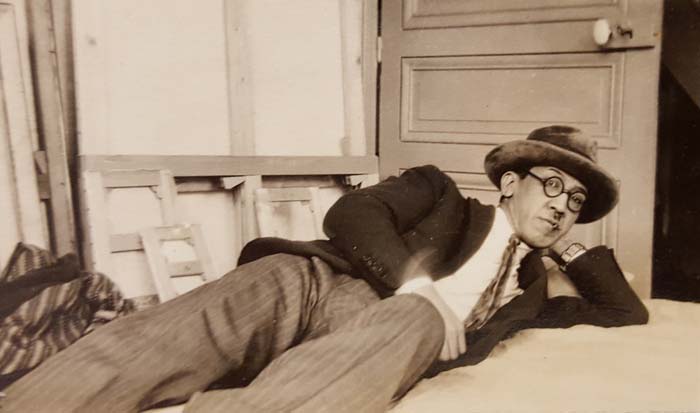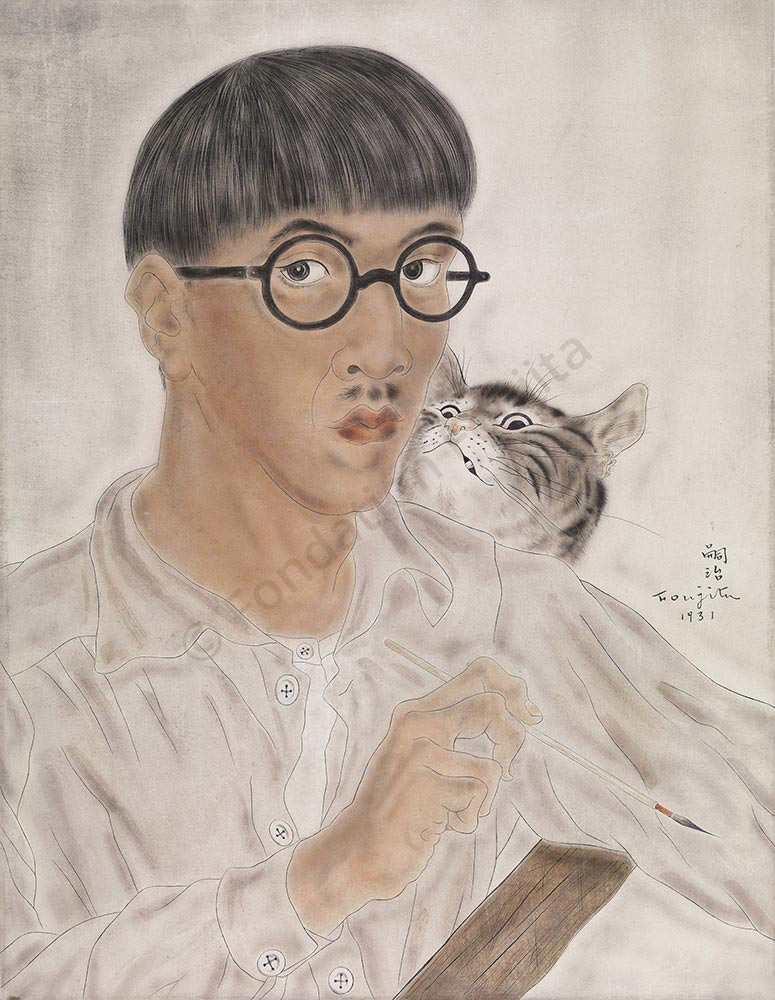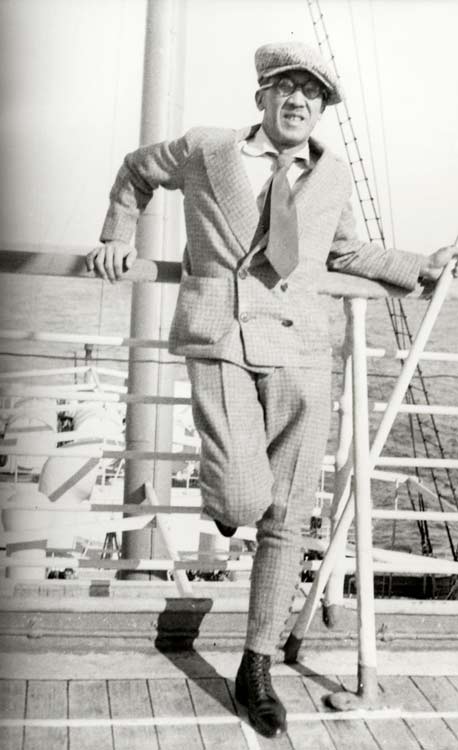« On me prédisait que je serais le premier peintre du Japon, mais c’était le premier peintre de Paris que je rêvais d’être. Il me fallait retourner aux sources … »
« À peine revenu de chez Picasso, je suis entré chez moi et j’ai jeté par terre toutes mes couleurs et mon matériel de peinture. Nous n’étions qu’au second jour de mon arrivée à Paris et déjà je tentais d’oublier toutes les techniques que j’avais apprises au Japon, de comment tenir sa palette à la manière de laver les pinceaux ... »
« La plupart des artistes, comme Matisse, Braque, peignaient avec une brosse large. Contrairement à eux, je me suis mis à peindre avec un pinceau fin. Tout le monde utilisait beaucoup de couleurs superbes. Mais j'ai cherché à peindre légèrement, et en noir et blanc. »





 Departure for a world tour: USA, Central America, Latin America, China, Indochina and Japan. At each stage, Foujita met with success.
Departure for a world tour: USA, Central America, Latin America, China, Indochina and Japan. At each stage, Foujita met with success.